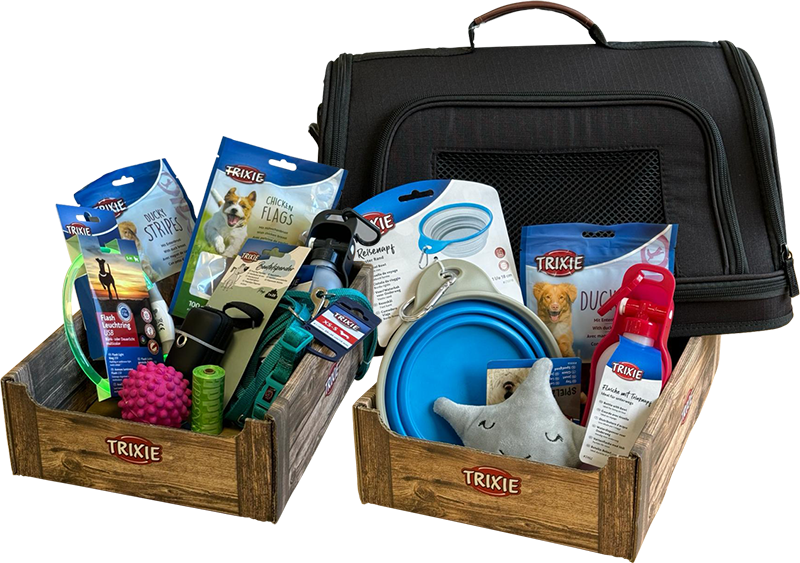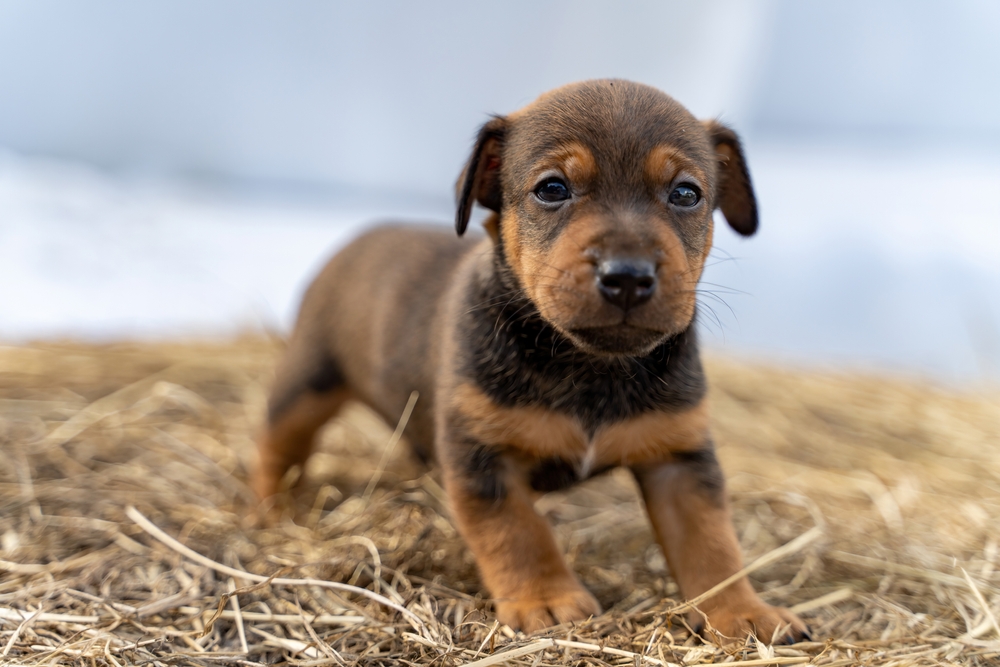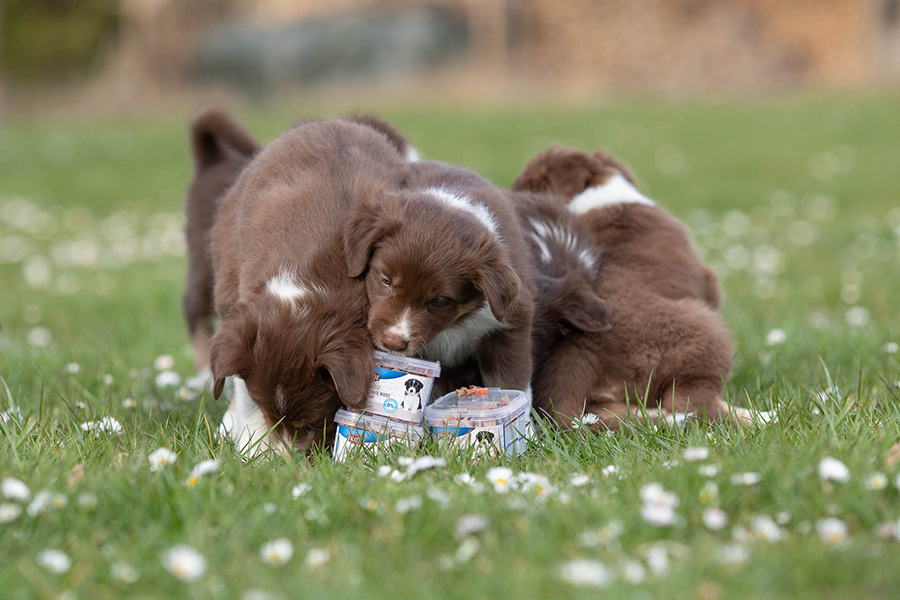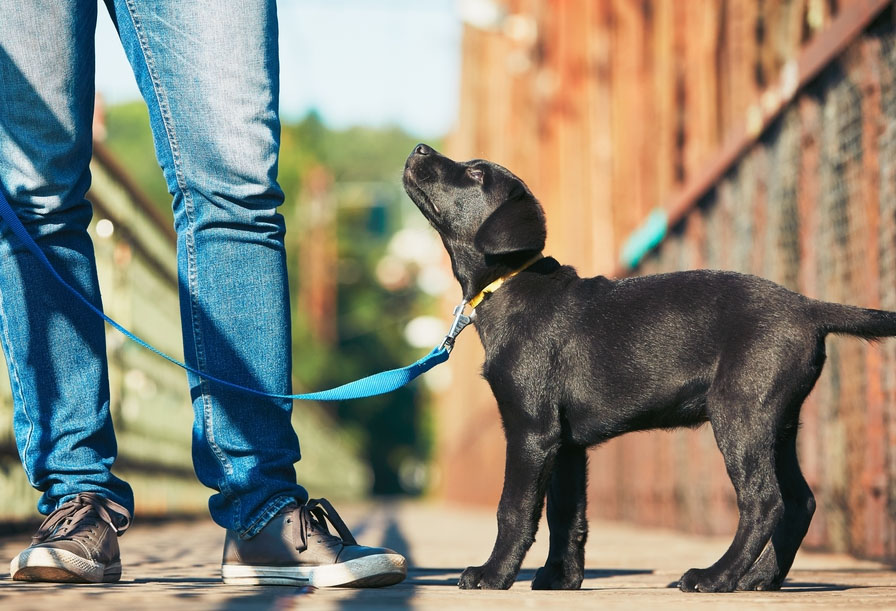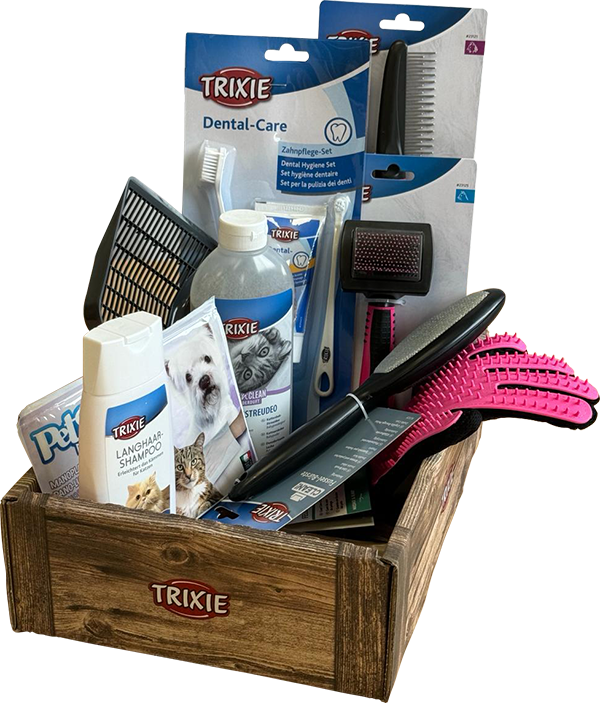Leaving the home is a must for all pets. Even those that live in aquariums or terrariums will have to be transported to the The most important thing for cats is that they associate the transport element as a friendly space. This way, the day you have to take them, for example, to a veterinary visit or on a car journey, the experience should start as normally as possible. To do this, it is essential to educate him in a positive way and get him used to his carrier. You will have to leave him in his resting area so that he sees it as another alternative that he associates with his territory. You can encourage him to access it with treats as a reward. Or with his favourite toy. The important thing is that they see it as a familiar element that is not associated with a traumatic veterinary experience at some point in their lives. And of course, in the case of dogs, these outings will be obligatory and several times a day. In this chapter we will discuss how we can generate healthy habits when going out of any of our pets' living spaces, whether they are enclosures, cages, flats or any other environment they inhabit. Providing our pets with frequent trips out of their resting and feeding environment will help their health in the following areas:
Improving emotional and social bonding
Outside their territory, you become your pet's true guide, making the emotional bond you maintain more crucial than ever. Offer your pet security during
the time you are away from your shelter through constant attentiveness and an empathetic attitude. In this way, you will generate even more emotional bonding at home as well.
Physical exercise
Leaving home or provide you with spaces beyond the ones you have for resting are great ways to keep your pet active and fit. Providing sufficient exercise is critical to your pet's overall physical health and well-being, helping them to maintain a healthy weight and reduce the risk of health problems.
Promoting mental development
Providing him with stimuli other than the usual day-to-day ones will help him with his mental challenges. In the home, visual, olfactory and auditory stimuli are almost always the same or vary very little.
However, the challenge of going abroad will help your pet to stay mentally stimulated.
Reinforce obedience in times of stress.
Because some of the outings can be really important, obedience takes on crucial weight. The objective is to to prevent exceptional situations as an outing to the vet alter the rest of the healthy habits already acquired in other aspects of their routine.
Socially habituating the pet to environments with other pets.
Pet grooming salons, vets, kennels and parks are all places where our pets will interact with others of their own and other species. Getting out of the house means exercising their social development.
How do I prepare my pet to leave home in a healthy habit?
How do I prepare my dog to leave the house in a healthy habit?
Create an outing routine in which it is clear to your dog that you are going out together. For example, you can give him a command that means you are going for a walk; or always pick up his walking items in the same order (lead, harness, sachet dispenser...). It is crucial that the outcome is positive for both and that the moment to put on the harness or clothes to protect him from rain or cold is a matter of seconds. What's more, the dog should feel comfortable and not try to take it off for the whole walk.
Of course, the longer and more often you can walk your dog, the better. He will thank you for it, whatever his size or breed. The biggest factor that can determine how much you go out is the age of your dog which, as we shall see later, play a very important role in his socialisation as a puppy. And, in turn, they will have to be reduced as he enters his senior years.
The aim of the outings is to make them enjoyable for both parties. Therefore, your friend's behaviour should be as desired at all times: that he walks at your side, that he listens to you when he meets other dogs, that you can let him out in the areas designated for this purpose...
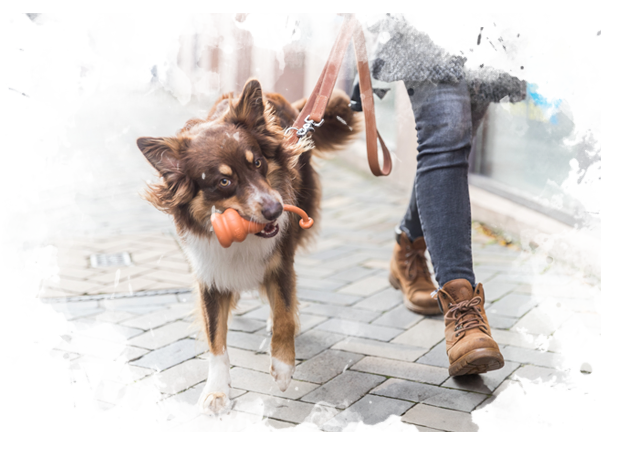
The steps in their first year of life
From puppyhood, the dog is taught by its mother to walk in a pack by means of clear signals:
- Guiding your direction through physical contact and back-to-back displacements.
- Focusing your attention to the present through small bites in the neck area in order to that the puppy is not distracted. It has to be taken into account that a dog perceives the reality of the The 80% uses its surroundings by smell and its eyesight only for orientation.
Stages of a dog's learning to walk
Day 1 to approx. day 7 from birth
Day 8 until approx. 3 months
From 3 to 12 months approx.
This is when he acquires the ability to walk in a partnership or pack. It understands team walking patterns, the guardian's forward or in-line order and learns the times when it can freely track or must stay close to the pace line, pulling to move the family forward. Humans acquire these skills from the age of 7 to 15 years under the guidance of their guardians.
How to choose your walking elements?
- Knowing the dogs' bodies.
- Choosing certified products by ethologists that will allow us to guide and educate our dog during his first year of life.
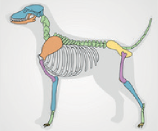
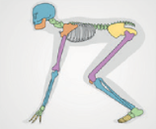
Walking in society: how we create the habit.
The best moment of the day
You and your dog in shape
Walking and running
The bike ride
From a sporting point of view, cycling is a very practical solution for people who live with dogs that need many hours of exercise every day. The possibility for the dog to run alongside us while we cycle increases our dog's exercise and makes us less tired. Breeds such as the Siberian Husky are a perfect example of this healthy habit for people and pets.
To approach cycling as a transport option with our dog, we must focus on getting our pet used to this habit as part of our routine together. The first steps should be to discover the bicycle through play and in a positive way, with cuddles or snacks. Of course, we will start with the bike stationary. It is best to start by pushing the bike and walking alongside it with our dog to gradually incorporate the rest of the steps. Only when the cyclist and dog are used to each other should you venture onto roads with traffic.
Depending on the size and characteristics of your pet, you can ride with your dog in a basket or trailer. It can also run alongside you, as we have seen above.
Dogs with poor mobility
Although this chapter does not address car travel safety in detail, it is important to look at how we facilitate access to the car for dogs with mobility problems.
From the point of view of habits, we are faced with an important situation to control: when a (usually large) dog has acquired the habit all his life of jumping in and out of the boot of our car on command, it becomes crucial that we support him in changing this habit when he gets older and it is no longer beneficial to his health. For example, because he may have a hip problem getting out of the car.
To this end, the new healthy habit could be to support the dog by continuing to travel in the boot, but accessing the boot from a ramp or steps. As a preventative measure, they can help to avoid joint damage and protect joints throughout the dog's life.
Walking Habits in Protection Situations
Our dog has to be walked every day. No matter the external conditions of visibility, temperature, humidity or time of day. Our responsibility is to equip both of us with the necessary certified items so that walking continues to be the healthy and enjoyable habit we have achieved.
The walk in the dark
In the dark, humans see only 10 % of what they can see in the light. The danger of accidents triples at dusk or in the dark as 90% of drivers in night-time accidents report not seeing the pedestrian. To give an idea, in daytime accidents, only 19% report the same.
Pets and people should therefore be equipped with reflective or luminous equipment (fixed or flashing) to prevent accidents when walking. As well as at dusk and at night, we should also use this type of equipment when there is fog, rain or snow.
Another time when it is very useful to equip our dogs with luminous elements is in areas where we can let them loose so as not to lose sight of them. Collars that emit light to locate them are a great help. By choosing the right collar thickness, you will prevent their fur from covering them and you will still be able to see them.
Regarding the type of product, the options are vast. The criteria should be based on the tastes and comfort of both people and pets, as we both need to be visible. Illuminated rings provide high visibility for many metres, as well as flashing lights or any type of hanging element, reflective waistcoats or scarves are well integrated into walking clothes, as well as leashes and collars that can be chosen with these qualities, representing a useful additional security, especially for cyclists. Even if it is daytime, it is always advisable to carry at least some reflective element, as we do not know how long the ride may last.
The walk outside the city
Very common in holiday areas such as housing estates or small beach resorts. Even at dusk, visibility can be variable or reduced even on well-lit roads. It is therefore recommended to always clearly identify the dog and the person with coloured markers.
Unprotected road users are at greater risk, as they are more difficult to distinguish. With the low beam of a car, they are only visible at a distance of 25 metres. Light-coloured clothing with strong contrasts increases the visibility distance to 40 metres. Reflective clothing can be seen even at a distance of 150 metres.
The walk in the rain
Rain can be a real nuisance when walking your pet. Being so close to the ground, they really end up soaking wet, even if the rain is not particularly heavy. Even on certain mornings in areas of high humidity, the night dew means that our dog arrives home soaking wet.
Especially on rainy days, a wet dog comes home wet and has to be dried off completely. This is a real nuisance for the animal and for people, especially in terms of time. If this is not done or is not done properly, the wetness of one day turns into a bad smell in the following days. And most importantly, it can lead to possible illnesses for the pet.
If any breed of dog is protected with a coat or mackintosh, we prevent it from catching most of the moisture when we take it out for a walk. When we go home, we should focus on removing all the moisture from our pet's coat. There are specific products that should help us to do this, such as absorbent mats. They can also be reinforced by other products such as heating pads.
Outings in extreme heat and cold
When temperatures exceed 25 °C, dogs can no longer regulate their body temperature by panting alone. They need cool air, shade, water... Cooling gel-filled items, especially mats, are very useful, but always bearing in mind that the dog must always be free to use them or to move away from them voluntarily.
These hot environments are exacerbated when we take our dog in the car, as very high temperatures inside a vehicle quickly become life-threatening for dogs. For this reason, dogs should never be left alone in the car.
With respect to cold environments, we must remember that most dogs live with us in heated rooms and the change in temperature when walking them in winter can be too much of a shock. In addition, many dogs have thin coats, are too small, too young, too old or too sick. It is also important to check paw pads when walking in snow, and even protect them by wearing boots.
How do we support the cat in the habit of going out of the house?
The most important thing for cats is that they associate the transport element as a friendly space. This way, the day you have to take them, for example, to a veterinary visit or on a car journey, the experience should start as normally as possible.
To do this, it is essential to educate him in a positive way and get him used to his carrier. You will have to leave it in his resting area so that he sees it as another alternative that he associates within his territory. You can encourage him to access it with treats as a reward. Or with his favourite toy. The important thing is that he sees it as a familiar element that is not associated with a traumatic experience.
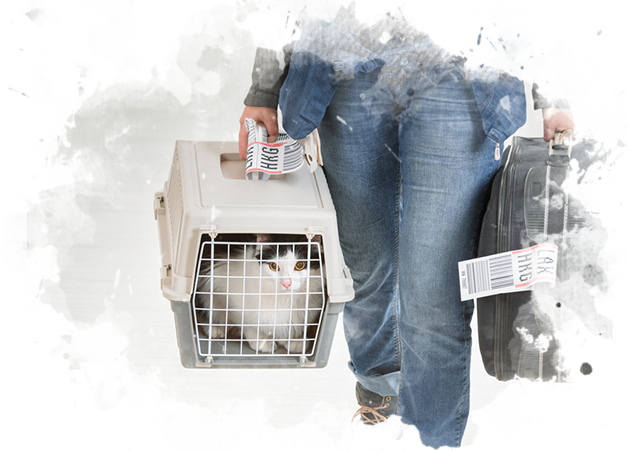
The consideration of "walk" in a cat should be understood as the space in the territory that a cat has to explore, check and check several times a day to ensure the good condition of its territory, the presence of available food and water, and the absence of external threats to its space.
We must allow our cat to explore his territory as a fundamental habit for his emotional and social well-being.
In situations where the territory contains outdoor space, we must ensure that it is not exposed to risks such as falling out of windows or jumping over fences. To do this, we can protect our space with window nets or facilitate safe egress through safety harnesses.
The territory as a cat's living space is a fundamental part of a cat's self-esteem and balanced state of mind. It is therefore our responsibility to keep it enriched by ensuring that water and food are always available (provided in several separate food bowls in different places), litter space in a safe place and scent stability, for example, with a stable and organic cat air freshener in the house.
Any disturbance of the territory or the need to leave the territory causes significant emotional stress for the cat. It can trigger a state of survival in the belief that the territory may be disturbed, invaded or abandoned.
Therefore, when faced with the need to go out of the territory, we must be careful to facilitate this emotional transition for our cat.
Cats leaving their territory
Before departure, we must prepare the moment so that our cat is confident both with us and with the environment. We can help him by preparing his carrier a few days in advance.
If from puppyhood, we accustom and accompany our kitten to move outside its territory and we carry out routines that help it to learn that there is no external risk or abandonment of the home-territory, we will improve its self-esteem and its stress level will be lower. We must always bear in mind that it is not natural for a cat to change territory and we must always strive for the best stability for him. In addition, we must facilitate the process of integration into the new space until he interprets it as a safe place or an extension of his territory.
To prepare the kennel before departure, a good habit is to keep the kennel located and open somewhere in the territory of your home. Inside, we can place a blanket or cushion containing a toy, snack or familiar scent. In this way, our cat will perceive the carrier as a familiar and not a strange element. They will get used to going in and out, and if we place it in an elevated area, it can even be used as a resting place or shelter. This habit will help us to prevent the cat, when it has to be used, from showing rejection when we move around with it.
Make sure, some time before you leave, you have offered your cat his main (wet) food and reinforce your bond with a liquid snack or treat offered first hand by you. This will boost their self-esteem and ensure they don't trigger hunger stress during the journey. There are soothing products that can help calm them down if your cat is not used to them.
While we move around with our cat in its carrier, we should try to do so safely, avoiding sudden movements, allowing it to have a view of its surroundings and frequently making sure that it is in a calm state. We can talk to him from time to time to reassure him that he is accompanied and that there is nothing to fear. We can offer a snack as a reward for his behaviour, and we can carry a relaxing product in the carrier, such as valerian toys, or use organic aromas familiar to the cat.
Steps on arrival
When we arrive at the destination (vet, new home, hotel...), it is very important to secure the space before opening the carrier.
We will leave the carrier in a safe place and open it, without removing the animal, giving it time to make the decision to leave. As the animal will be confident in your company, it will be up to him to decide when it is time to explore the new territory again.
This way, we can have a food and water bowl in the new space. Also a litter tray with its usual litter, allowing your cat to walk around the room and gain confidence, noting that it is accompanied by you and that the territory is safe and secure.
In the presence of strangers such as a veterinarian, it is important that everyone is calm and offers a reassuring welcome, offering a nursing item, or family snack that will facilitate the cat's reliable communication with other members of the family.
It is important to understand your cat's emotional state before making a sudden move. The alteration to a state of survival in unfamiliar territory can lead to serious health problems and behaviour that is not beneficial to the cat and other people.
Whenever you travel to the vet with your cat, rely on their expertise to make your cat's arrival as smooth and beneficial as possible for all concerned.
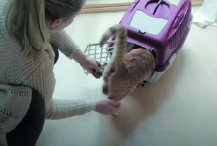
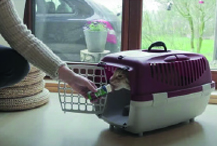
How to get out of the house with my bird or small mammal?
The environment of the carrier in which we transport our smaller pets must be suitable both in terms of its characteristics and the relationship between our pet and the object. In the special case of birds, it is crucial to choose the right appropriate size, as the time spent indoors can negatively affect their plumage, and even influence their flight.
Taking our smaller pets out of their usual spaces can also be a very healthy habit. With small mammals, extreme caution must be taken to ensure that their small size does not cause scares when they are found again; but in very controlled spaces, the experience of take them out of their cage or enclosure and let them exploreIt can be very rewarding if we make it a habit to do it, for example for a small garden. Especially in households with children.
In turn, with the same or even more extreme care, in homes with trained psittacines and after ensuring that all windows in the home are closed, the routine flight out of its cage also provides our pets with physical, emotional and social health benefits, as they become more connected to their environment.
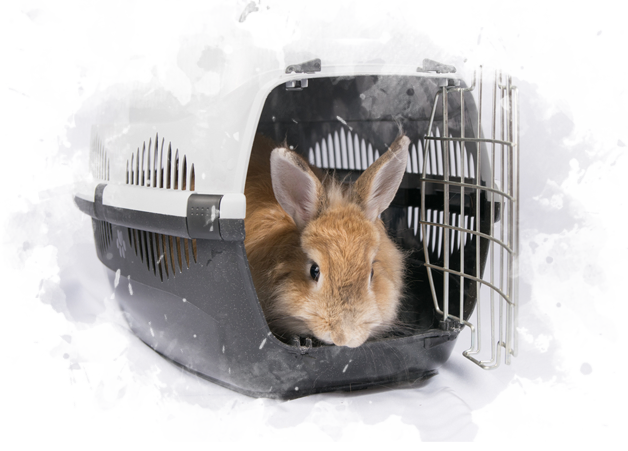
When it is necessary to move a bird or small rodent to another place, the process is very simple. It simply consists of keeping a series of environmental enrichment elements inside its carrier or transport cage that allow our companion to feel completely safe.
In addition to water, food and shelter, we should try to cover our carrier or cage as much as possible so that our pet cannot perceive an outside threat at any time. To do this, you can use a blanket or make sure that your carrier is covered.
When moving safely, try not to make any sudden movements in order to keep the carrier or cage as stable as possible. Also avoid loud outside sounds that may disturb their state of security and calm.
Once we arrive at our destination, place your companion in a quiet and safe place, offer a favourite food or snack and allow a reasonable amount of time before uncovering or moving your animal to its new space.
If our companion is used to accompanying you from an early age, it will be easier for him to go out, provided that you offer your company as his emotional refuge at all times. For a rodent, the constant presence of a shelter where it can hide in the event of an external threat is important. Therefore, in its transport cage and outside, you should be able to offer it your lap or its shelter.
There is the perfect kit for every habit.
